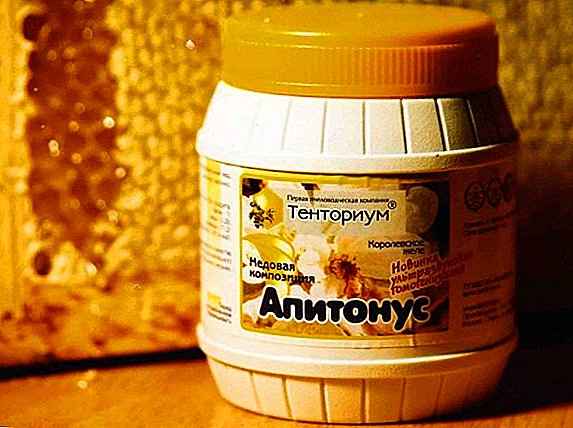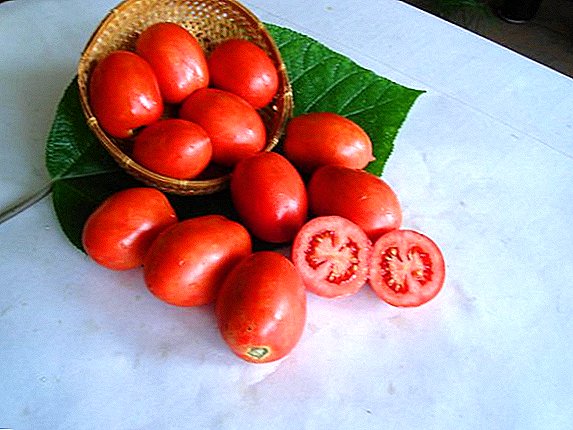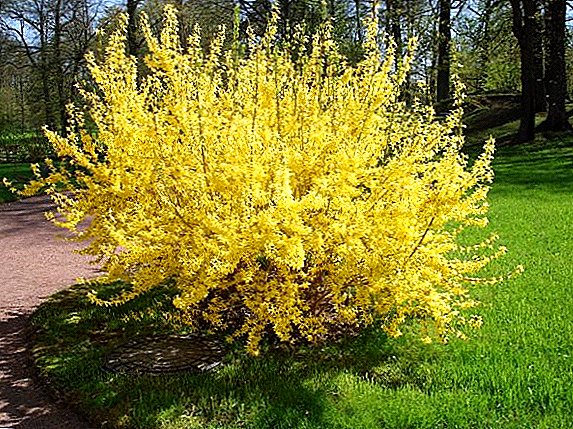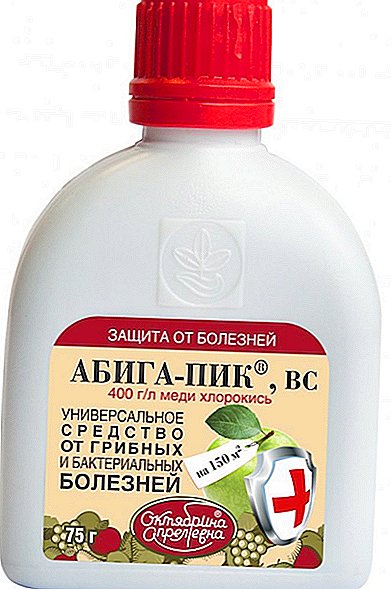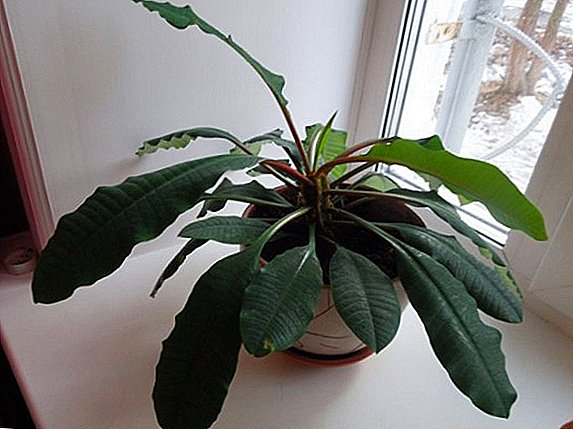 In the open nature, spurge rarely pay attention, but its indoor version often interests many people. The positive aspect of growing this particular plant is its simplicity in terms of care, which makes it an excellent option for those who do not have the opportunity to spend a lot of time on home vegetation. In this article we will describe how to care for spurgeons, how to multiply it and what problems you may encounter in the process of its breeding.
In the open nature, spurge rarely pay attention, but its indoor version often interests many people. The positive aspect of growing this particular plant is its simplicity in terms of care, which makes it an excellent option for those who do not have the opportunity to spend a lot of time on home vegetation. In this article we will describe how to care for spurgeons, how to multiply it and what problems you may encounter in the process of its breeding.
Optimum conditions for keeping milk euphorbia
To create your euphorbia ideal conditions for growing in a house, you need to consider several important parameters: temperature conditions, lighting, soil composition and correct irrigation.
Did you know? Many species of modern milkweed came to us from Africa, in the southern parts of which the tribes of the aborigines still smear their arrows and spears with the juice of this plant. It helps they are in the hunt, because the juice is milkweed poisonous.
Temperature and lighting
Euphorbia is quite a heat-loving plant, but at different periods of development it needs different temperature conditions.  For example, in summer, the temperature should be kept within + 20-25 ° C, and the plant will feel better in the open air (on the balcony or in the garden).
For example, in summer, the temperature should be kept within + 20-25 ° C, and the plant will feel better in the open air (on the balcony or in the garden).
Comfortable temperature in combination with plenty of sunshine and fresh air has a positive effect on the further flowering of milkweed. In winter, the temperature indicators for growing this plant should vary between + 12-16 ° C.
Important!Not all types of milkweed are equally thermophilic, and some plants can safely withstand bylowering the temperature to + 6-10° C (Mediterranean species).
Despite the fact that domestic euphorbia is favorable to bright lighting, it cannot be taught to the scorching sun rays that can leave burns on the plant.
In winter, when there is very little natural light, spurge can stop growing. Therefore, to avoid such undesirable consequences, you need to organize artificial lighting. To do this, just put a lamp next to the pot, but turn on the light only early in the morning or late in the evening, when daylight is still (or is) not enough.
How to prepare a substrate for milkweed
Soil for planting or transplanting milkweed can be bought off-the-shelf or prepared by yourself.  For cultivation of a plant at home, the following soil mix will be the most suitable option: leaf soil, sand and clay-grain soil are mixed in proportions 2: 2: 3 (humus is often used instead of clay-grain soil).
For cultivation of a plant at home, the following soil mix will be the most suitable option: leaf soil, sand and clay-grain soil are mixed in proportions 2: 2: 3 (humus is often used instead of clay-grain soil).
Alternatively, you can simply mix the sod with sand (in equal parts).
Important!Always remember the need for drainage (a layer of a mixture of pebbles, expanded clay and broken bricks), which allows you to remove excess moisture outside.
Proper care for euphorbia at home
In addition to meeting the requirements for temperature and lighting, the concept "Proper care for euphorbia" includes a clear outline:
- glaze,
- fertilizers,
- top dressing of the soil,
- trim plants.
Watering and humidity
Finding out how to properly water the euphorbia, first of all it is necessary to understand that different needs for soil moistening correspond to different stages of development of this plant.
So, in the period of active vegetative processes, spurge needs significantly more water than in winter, when it is at rest. In the process of active growth of the plant will be useful and regular spraying of the leaves.
Did you know?In some species of milkweed, the mentioned “rest period” falls not in the autumn-winter period, but in the spring, which must be taken into account when dosing the volume of watering.
 An important role in the issue of proper irrigation is played by the quality of the liquid used, water should be:
An important role in the issue of proper irrigation is played by the quality of the liquid used, water should be:
- warm (or room temperature),
- separated
- soft.
If you do not have time or forgot to defend the water - nothing wrong with that. Just boil ordinary tap water and allow it to cool to room temperature. An alternative solution to this problem is fluid filtration.
Room spurge perfectly copes with dry air in the room, so it will be enough to wipe the leaves once every few weeks. No additional measures to increase humidity are required of you.
Fertilizer and top dressing of the soil
Despite the fact that room spurge initially planted in fertilized soil, you still have to make additional nutrients in the process of its growth and development. As such feeding, you can purchase ready-made fertilizers intended for cacti and succulents. It is also well suited compositions of a wide spectrum of action.
In winter, spurge better not to feed, because, in fact, during the rest period it does not need it. With the onset of spring, the plant begins to feed 50% of the concentration of mineral fertilizers.
Top dressing is a balanced nutrition of any plant, from which it receives all the necessary vitamins and trace elements that contribute to its rapid growth. First of all, they include root and zircon, so make sure that they are present in your chosen composition. In most cases, it is necessary to apply fertilizer to the soil from spring to autumn, feeding the plant once a month.
Milkweed Trimming
 Milkweed pruning is carried out with the same purpose as the rest of domestic plants: to get rid of diseased and dry branches and give the crown a beautiful shape. You can complete the task with a regular knife, but it’s better to use gloves.
Milkweed pruning is carried out with the same purpose as the rest of domestic plants: to get rid of diseased and dry branches and give the crown a beautiful shape. You can complete the task with a regular knife, but it’s better to use gloves.
Pruning is subject to one or several peaks of the plant, which will help limit its growth. How exactly to form an euphorbia is a personal matter of each grower, but in most cases only the tip is subject to removal. As a result of pruning you will be a little easier to care for the plant, and it does not take up much space on the windowsill.
Video: Euphorbia pruning, rooting, care
Safety rules for the care of euphorbia
When taking care of room euphorbia, it is quite possible that you will have to contact its juice (for example, when pruning), and it is quite poisonous. Once on the skin or mucous membrane of a person, the poison causes a strong burning sensation, redness of the skin or even the appearance of blisters..
When interacting with the mucous membrane of the eye, toxic substances cause inflammation of the conjunctiva and temporary blindness. If the juice of milkweed enters the body through the oral cavity, then it threatens with diarrhea, vomiting and severe pain in the abdomen. With more serious poisoning, seizures, dizziness, impaired blood circulation, or even delusional hallucinations are possible.
Therefore, when cutting plants, be sure to use gloves that protect your skin from contact with the poison of the plant. Just in case, prepare napkins or sheets of paper in advance, as milkweed juice is washed very badly.
Did you know?In the old days, Russian doctors used euphorbia in the treatment of rabies (hydrophobia), the evil eye, as a laxative and nauseous remedy.
Proper milkweed transplant
 An older plant may have little space in a familiar pot, so it needs to be transplanted into another container. In addition, the rules of transplantation of this plant must be known when answering the question of how to plant spurge room.
An older plant may have little space in a familiar pot, so it needs to be transplanted into another container. In addition, the rules of transplantation of this plant must be known when answering the question of how to plant spurge room.
First of all, it is worth remembering that changing the pot from a smaller one to a larger one is necessary no more than once every two years., and the selected capacity for transplant should not be much larger than the previous one.
In most cases, it is better to perform an euphorbia transplant in springtime, which will allow the plant to recover and adapt to new conditions more quickly. However, spurge buying not only in the spring, but throughout the year, so in such cases, the plant will not wait for the beginning of spring.
Room spurge needs to be transplanted if it is bought in a shipping container or it was previously grown not in nutrient, but in a special soil containing growth stimulants. This soil is not suitable for long-term cultivation of milkweed.
The process of transplanting itself is no different from transplanting any other indoor plant.:
- At the bottom of the pot is laid a layer of drainage,
- Then the soil mix is filled up (possible variants have already been described above),
- And the plant itself is placed in it.
How to multiply spurge at home
There are several ways of breeding room euphorbia:
- grafting,
- seeds
- division of the bush.
Cuttings
With the advent of spring, the most convenient way to grow a plant is to use stem cuttings.  Segments of 12 cm in length are taken from the top of the shoot (they should have several leaves). Then they are dipped in warm water, which helps to stop the release of the milky juice, after which the cut point is powdered with coal or ground pepper. After a few days, a protective film should form on the cut of the stem.
Segments of 12 cm in length are taken from the top of the shoot (they should have several leaves). Then they are dipped in warm water, which helps to stop the release of the milky juice, after which the cut point is powdered with coal or ground pepper. After a few days, a protective film should form on the cut of the stem.
Prepared cuttings, pretreated with a root, are planted in a mixture of sand and peat, plentifully watered and, covered with a film, left in a bright place for rooting at a temperature of + 20ºC. Full rooting of cuttings of milkweed occurs within two weeks.
There is another similar breeding method. From the adult plant you need to pinch off (pinch, not cut) the leaf and, after it drains white juice, sprinkle it with a root or other root growth stimulator.
Treated cuttings are placed in a container with coarse sand, then watered and covered with a film (it must be removed daily and the soil is aired to prevent the occurrence of fungal diseases). A month later, the leaves rooted. Typically, this method is used for breeding triangular or white-faced milkweed.
Seeds
Seed method most often propagated spherical euphorbia. To do this, freshly harvested seeds are sown in an oven-calcined and richly watered mixture of leaf earth and sand, cover the box with film and place in a warm and bright place (optimum temperature + 25ºC).  Seeds need to be ventilated every day, and the soil should be moistened periodically (the ground should not be dry). As soon as the seedlings appear, and this usually happens in 2-4 months, you should wait for the appearance of two pairs of leaves and transplant the seedlings to a permanent place.
Seeds need to be ventilated every day, and the soil should be moistened periodically (the ground should not be dry). As soon as the seedlings appear, and this usually happens in 2-4 months, you should wait for the appearance of two pairs of leaves and transplant the seedlings to a permanent place.
Dividing bush
This method is very popular when breeding Milkweed Mille (or Milkweed brilliant). The best time to use it is early autumn or early spring. You are required to carefully remove the spurge from the pot, examine its root system and carefully divide the roots and stems into parts, ideally without using cutting objects..
If it is impossible to do without “surgical intervention”, then before starting to cut, you need to sterilize the used tool, and after performing the procedure, do not forget to wash the cut with warm water (help stop the juice excretion), sprinkle it with pounded charcoal and spread out parts of the bush in different containers with a pre-prepared layer of drainage and soil.
Given that this method of reproduction is the most stressful for milkweed, in the first year you can not expect from the plant either intensive growth or abundant flowering.
Possible problems in the cultivation of milkweed
 Whatever conditions for the full growth of milkweed you create, even the most responsible grower often encounters certain problems when growing this plant. Among the most frequent are:
Whatever conditions for the full growth of milkweed you create, even the most responsible grower often encounters certain problems when growing this plant. Among the most frequent are:
- Pest problems. Most often, spurge attacks aphid, with the result that damaged leaves first lose their usual color, curl, and then dry up and fall off. Mineral treatment of the plant (if the infection is weak) or more serious drugs, such as Actellic or Fitoverm, will help you in the fight against this scourge. Whitefly, which lives on the underside of the leaves and sucks the cell sap, can also be the pest of the plant. In this case, only insecticidal preparations can help.
- Leaf fall - Another fairly frequent problem of milkweed, which is often the result of a lack of sunlight. This means that the plant will have to urgently look for a more comfortable place in the house.
- Yellowing and drying leaves. In most cases, this phenomenon is the result of a pest invasion, although spurge can react in the same way to a lack of moisture. In this case, you need to adjust the watering.
- Withering plants. It can have many causes, ranging from the negative effects of insects and ending with the usual draft.



